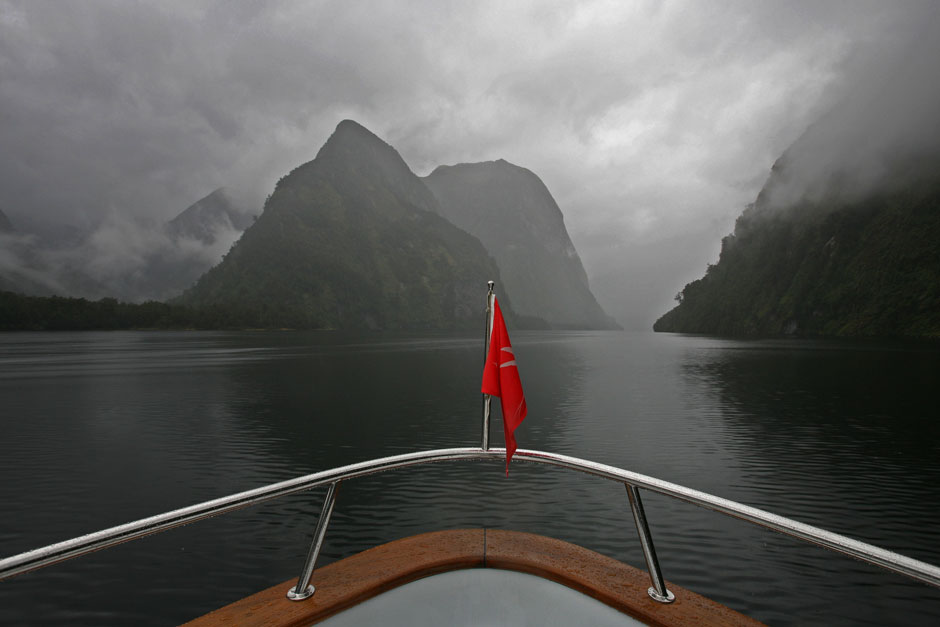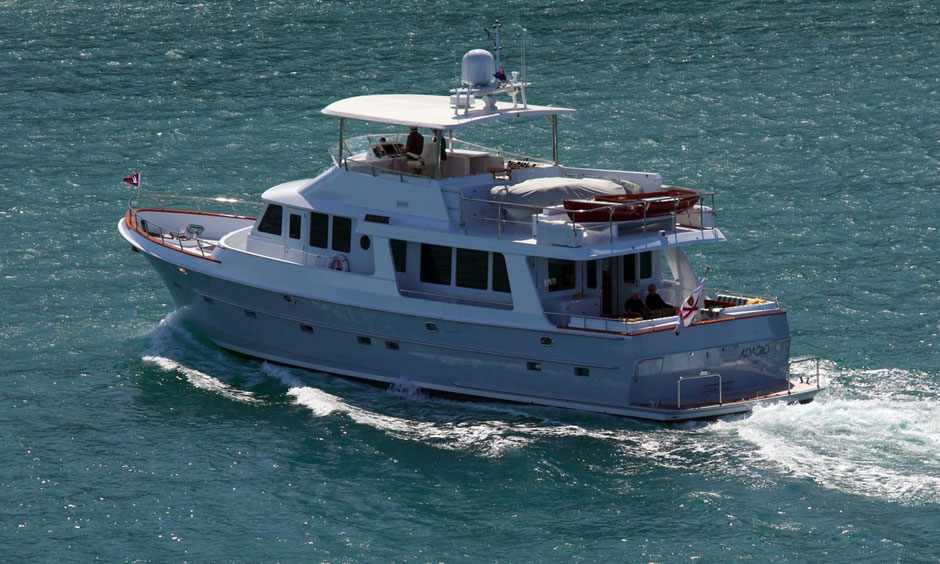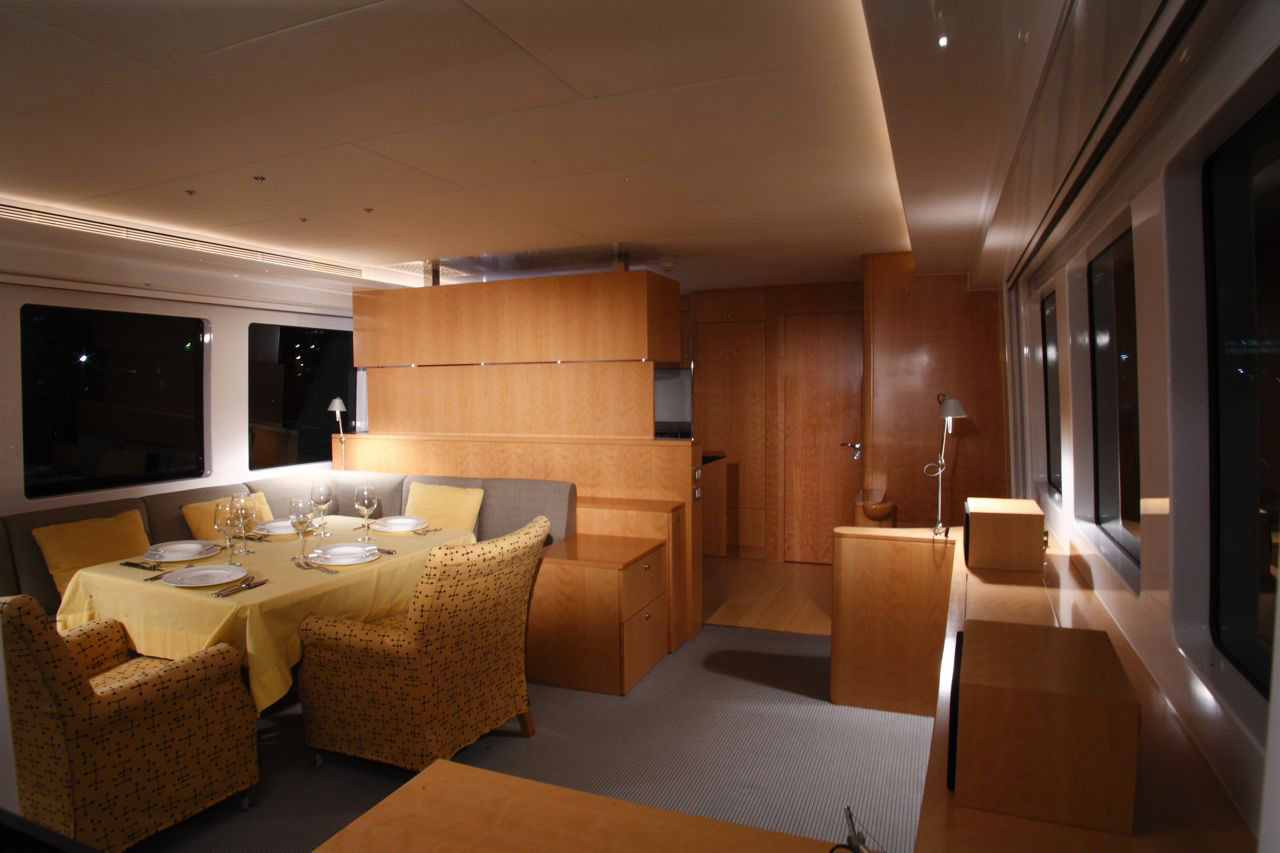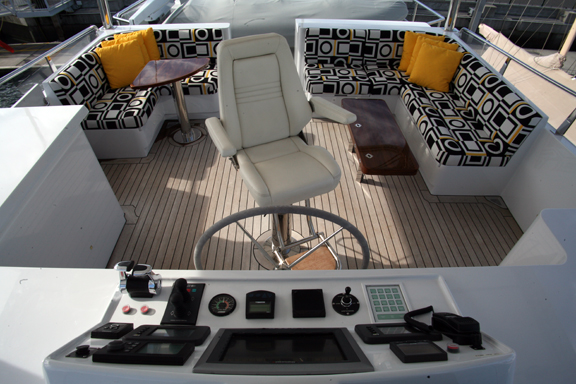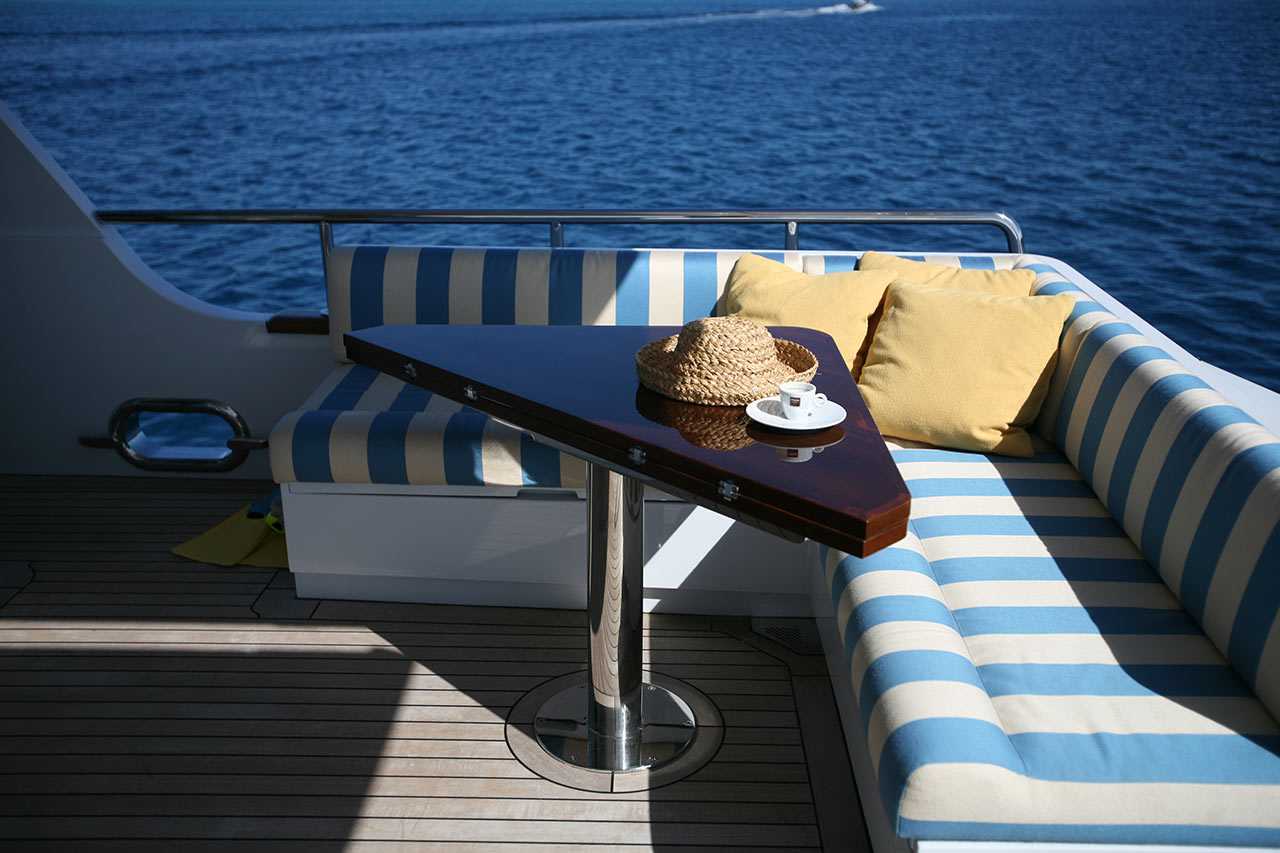
PRESS
Yachting Magazine, USA
www.yachtingmagazine.com
Adagio, a 72-foot cruising motor yacht from C.W. Paine Yacht Design
By Dennis Caprio
The Merriam-Webster Unabridged Dictionary tells us that the word adagio means “slowly: in an easy graceful manner.” The 72-foot motor yacht Adagio perfectly reflects the definition of her name—no easy task for designer Mark Fitzgerald of C.W. Paine Yacht Design.
Long-range cruising yachts, or expedition yachts if you prefer, often suffer aesthetically from the demands of their purpose. Typically spending weeks at sea, these yachts must carry a lot of fuel—nearly 3,000 gallons in this case—stores to feed the crew, the refrigeration and freezer units to preserve the tasty perishables, lockers in which to stow clothing and linens, a washer and dryer to keep the soft goods clean, plus comfortable spaces in which to live and work. Add the usual water maker(s), generators, air-conditioning/heating equipment, a trash compactor to reduce the volume of refuse that has to be stowed between ports of call, tanks to hold fresh water and waste, the variety of electronic navigational gear and entertainment systems, and you’ll see the full-load displacement rapidly rise. Now, the designer has to wrap all this in a relatively fuel-efficient, seaworthy and attractive package. Whew!!
Making Fitzgerald’s task more difficult, Adagio’s owner tapped in on his many years of experience and requested a yacht of the correct size—really, the smallest-possible yacht for his mission. From an aesthetic point of view, the larger the yacht—especially LOA—the more easily a designer can disguise the bulk that the accommodations require. The greater the dimensions, of course, the more volume the designer has play with inside the yacht. He can waste a bit of space here and there without compromising the placement of machinery, wiring, plumbing, or crowding the accommodations.
In addition to disguising the bulkiness of the yacht, the designer has to avoid the clichés that have crept onto the exterior of some expedition yachts—such as making them look like a tramp steamer or a North Sea trawler or a tug. In this 72, Fitzgerald has artfully combined the sea keeping ability of proud forward sections above the waterline with the elegance of a subtle clipper bow. You have to look closely to see the gentle concave curvature of the stem. Having a lot of freeboard in the bow keeps the yacht from burying its nose in big head seas. Back aft, the owner wanted to keep the freeboard relatively low, to reduce the impression of bulk. Fitzgerald drew a gracefully sweeping sheerline, which flattens at about amidships and continues straight to the transom. A row of rectangular portlights, the rub rail that echoes the sweep of the sheer, and the spray-suppressing chine forward of amidships fool our eyes into seeing a lower profile than actually exists.
A variety of shapes and shallow, but complimentary, angles characterize the superstructure. Its upright stance creates the most useable space inside the yacht, and it gives her the businesslike appearance of a serious oceangoing cruiser. I like the square windows in the side of the house. They are small enough to be safe and large enough to shed loads of natural light on the occupants of the house. Notice how the rake of the flying buttresses, which support the boat deck, mimics that of the after terminus of the flying bridge. We find a similar rake in the windshield on the flying bridge. Drawing these elements to be perpendicular to the waterline wouldn’t compromise the integrity of the structure, but the yacht would suffer aesthetically. These touches are visual treats for which the yacht pays no penalty. We can say the same thing about the rake of the Portuguese bridge’s fascia and that of the windshield.
The artistry continues below the waterline. During his formative years (the 1970s), Fitzgerald worked with the legendary Jack Hargrave and from that experience learned to appreciate the advantages of the bottom that Hargrave first drew for Burger Yachts in 1960. This bottom has rounded bilges in the forward sections, and they transition into chines over the after sections. The rounded bilges softly part the seas, and the chines provide lift and help to damp roll. The lift subdues the quarter wave, and the drag it creates, we usually see when displacement yachts try to go fast. Fitzgerald’s research into this shape and his subsequent refinement of it in the computer have produced a yacht that burns very little fuel at cruising speed, is very stable and will perform well in a wide variety of conditions.
Below decks, we find accommodations for six persons forward of the engine room and space aft for a crew of two. The full-beam master stateroom amidships is at the center of gyration, and should be comfortable for sleeping in all but the most atrocious conditions. We also find access to the engine room on the starboard side of the master. The bridge and lounge area share the upper deck, separated by an appropriately seagoing galley amidships. Like the master stateroom, the galley is over the center of gyration, giving the cook a safe place in which to prepare meals at sea.
This yacht will be a delightful cruising home for the owner and his friends and family. She’s built of aluminum and finished to reduce the number of hours the crew has to work to keep Adagio in Bristol condition.

